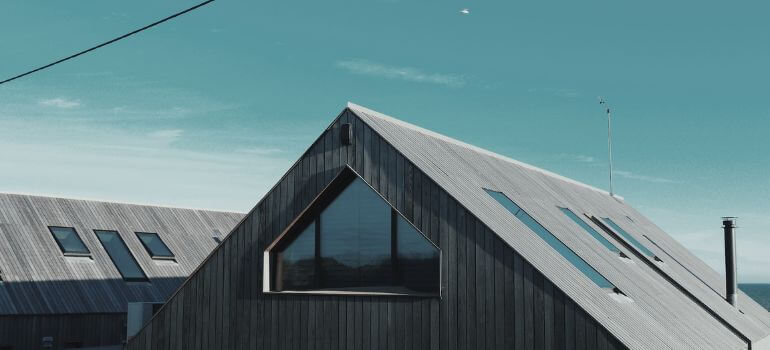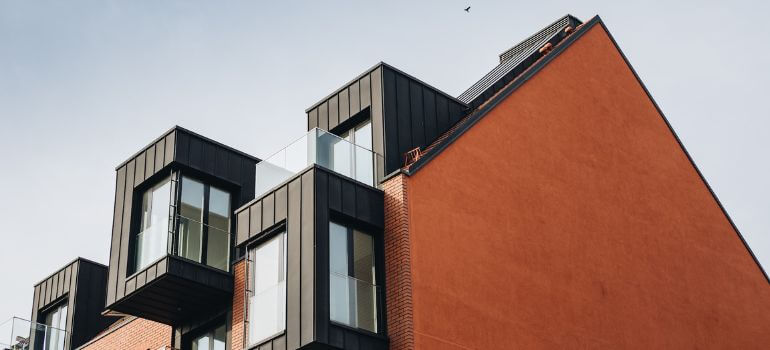Embarking on a home renovation or simply trying to usher more natural light into your living space? Understanding the differences between roof windows and skylights can be essential in crafting the ambiance and functionality you desire. While often spoken of interchangeably, roof windows and skylights offer distinct benefits and limitations that can dramatically alter a room’s aesthetics and atmosphere. This in-depth exploration aims to demystify the terms and guide homeowners towards making choices that align with their needs.
Whether you’re considering a chic, contemporary upgrade or covet the gentle play of daylight across your living spaces, determining whether a roof window or a skylight is most appropriate for your space is paramount. Join us as we elucidate the pros and cons, ensuring your architectural additions not only elevate your home’s design but enhance your quality of life.
Key Takeaways
- Discover the definitive characteristics that set roof windows and skylights apart.
- Demystify common misconceptions about these two popular daylighting solutions.
- Learn how natural light can be utilized strategically through either roof windows or skylights.
- Consider the architectural and functional implications of your daylighting choices.
- Gain the necessary insight to make an educated decision tailored to your home and lifestyle.
Understanding the Basics: What Are Roof Windows and Skylights?
When looking to enhance your living space with natural light and fresh air, selecting the appropriate overhead glazing options, such as roof windows or skylights, is crucial. This section unfolds the essential characteristics and applications of these two popular choices, setting a clear groundwork for homeowners and designers alike.
The Definition of a Roof Window
A roof window is designed to be installed into the slope of a roof, paralleling the pitch. Unlike traditional windows, which are vertical, roof windows are positioned overhead, making them ideal for introducing sunlight and ventilation under the rafters. One of the significant roof window benefits is its ability to open fully, which not only allows abundant daylight to enter but also serves as an emergency exit if necessary. The installation process, generally referred to as roof window installation, often involves reinforcing the roof structure to ensure safety and long-term performance.
What Constitutes a Skylight?

Skylights, on the other hand, are glass or plastic panels set into the roofline and are primarily fixed, although venting models are available. These installations offer a passive design solution, forming an integral part of the architecture. The skylight benefits include a seamless aesthetic appeal and the ability to flood an interior with a soft, natural glow, dramatically transforming the ambiance of any space. For successful skylight installation, consideration for weatherproofing and thermal insulation is paramount, ensuring a harmonious blend of form and function.
Typical Placement and Purpose
The placement of roof windows and skylights is governed by the architectural design of the building and the desired outcome. Roof windows are often seen in attic conversions or loft spaces where direct access to the roof’s slope can be utilized for optimum lighting and ventilation. Skylights find their purpose in areas that may benefit from diffused lighting, such as hallways or rooms in the core of a house away from the exterior walls. Both installations have the power to alter the dynamics of a space dramatically, yet they must be chosen with a clear understanding of their practical applications and inherent benefits within the broader context of architectural design.
Design Aesthetics and Architectural Impact
In the realm of home design, the distinction between roof windows and skylights is not just functional but also aesthetic, contributing significantly to the architectural essence of a space. Exploring the design implications of these features reveals their ability to transform living areas not only by introducing natural light but also by creating visual statements that resonate with architectural intent.
Visual Style of Roof Windows
The installation of a roof window brings with it a host of roof window advantages that enhance both the interior and exterior design of a home. Roof windows are often associated with a modern and sleek appearance, offering clean lines and the opportunity to enjoy expansive views of the sky above. Whether it’s a traditional pitched roof or a more contemporary flat roof, these windows can be integrated seamlessly, adding character and sophistication.
- Modern aesthetics: Roof windows fit well within contemporary design schemes, complementing sharp angles and minimalist decor.
- Exterior charm: On the exterior, roof windows can break the monotony of a roofline, creating visual interest and potentially increasing curb appeal.
How Skylights Complement Room Design and Ambiance
The term skylight advantages often conjures images of a room bathed in diffuse sunlight, creating a serene and inviting space. Skylights can be particularly effective in rooms where wall space is limited or where privacy is a concern, as they provide illumination without compromising on seclusion. Moreover, the addition of a skylight can turn an otherwise ordinary room into an architectural feature in its own right.
- Variety of styles: With different shapes and sizes available, skylights offer a versatility that can enhance the ambiance of various room designs.
- Ambient light: The gentle, indirect light from a skylight can soften a room’s atmosphere, making spaces feel more open and airy.
Integrating Natural Light with Style
When considering roof window vs skylight, it’s evident that both options offer distinctive methods for marrying style with natural light. This integration is pivotal in crafting living spaces that are not only functional but also aesthetically aligned with homeowners’ visions. By choosing the right option, a balance can be struck between natural illumination and architectural expression.
| Feature | Roof Window | Skylight |
|---|---|---|
| Architectural Integration | Blends with modern aesthetics; offers exterior appeal | Suits a variety of roof types; subtle presence |
| Visual Impact | Creates a statement with clear views | Diffuses light for softer ambiance |
| Design Versatility | Ideal for pitched roofs; various opening mechanisms | Available in multiple shapes; fixed or venting options |
Roof Window vs Skylight: Analysing Functional Differences
When considering the functional aspect of roof windows and skylights, multiple factors emerge that influence a homeowner’s decision. These include considerations such as ease of operation, maintenance requirements, and the integration within the home’s existing structure. Understanding the differences between roof windows and skylights is crucial in assessing which will offer more roof window benefits or skylight benefits for individual living spaces.
- Operation: Roof windows often come with the capability for manual or motorized opening, which provides an effective avenue for ventilation and can be an emergency egress. Skylights, on the other hand, may be fixed or operable, with the latter requiring additional mechanisms to open.
- Usability: The difference in usability can be a determining factor, as roof windows provide easier access for cleaning and maintenance, largely due to their placement within reach from inside the home, in contrast to many skylights which often require external access.
- Maintenance: In terms of upkeep, both require regular cleaning to ensure maximum light entry; however, the tasks involved will differ based on positioning and operating features.
- Interaction with Home Elements: Both roof windows and skylights must be evaluated for how they harmonize with the home’s insulation and roof infrastructure, affecting overall energy efficiency and integration costs.
To clearly illustrate the differences between roof windows and skylights, let’s delve into a side-by-side comparison:
| Feature | Roof Window | Skylight |
|---|---|---|
| Ventilation Options | Manual or motorized opening for active ventilation | Typically fixed; some models offer passive ventilation |
| Emergency Egress | Often designed to open fully, allowing escape | Usually non-operational and not suitable for emergency exit |
| Access for Maintenance | Accessible from indoors; easier to clean and maintain | May require roof access for cleaning and maintenance |
| Integration with Roof Structure | Requires precise fitting within roof’s slope | More flexible placement but needs careful waterproofing |
Roof window benefits typically center around increased functionality and usability, making them a versatile option that satisfies both aesthetic and practical requirements. On the contrary, skylight benefits emphasize passive lighting and present an architectural feature which is more permanent and less interactive. The choice between the two ultimately rests on how homeowners value these features in correspondence with their living space and lifestyle.
Ventilation and Energy Efficiency
In the quest for a home that breathes comfort and sustainability, homeowners often look to roof window installation and skylight installation as viable options for enhancing the living environment. In this section, we’ll explore how the incorporation of these features can lead to improved ventilation and energy efficiency, and consider the respective advantages of each.
Roof Window Advantages for Improved Air Circulation
Roof windows offer a unique set of advantages when it comes to ventilation. Their design allows for adjustable air circulation, which is essential for maintaining indoor air quality and preventing the buildup of moisture and condensation. Roof windows can be opened or closed to varying degrees, enabling homeowners to fine-tune the airflow into their homes based on weather conditions and personal preference.
- Manual or Electric Opening: Choose from manually operated windows, which are ideal for easy-to-reach locations, or electrically powered options that can be operated with the push of a button, a feature particularly beneficial for high ceilings.
- Ventilation Flaps: Some models come equipped with ventilation flaps, allowing for air exchange even when the window is closed, thereby maintaining energy efficiency.
- Thermal Insulation: The thermal properties of modern roof windows help to minimize heat loss during colder months, contributing positively to a home’s energy performance.
Skylight Benefits: Passive Air Exchange and Light Entry
Skylights, on the other hand, often serve a dual purpose. They not only illuminate living spaces with a consistent source of natural light but also provide passive air exchange. This can be especially advantageous in spaces where maintaining a steady stream of natural light is as important as subtle ventilation.Here are the skylight advantages to consider:
- Floor-to-ceiling natural light reduces the need for artificial lighting during daylight hours.
- Passive ventilation models like vented skylights can help reduce heat buildup and improve air quality without the need for manual operation.
- Fixed skylights are sealed, which eliminates concerns about air leakage and offers a boost in overall energy efficiency.
Comparative Analysis on Energy Efficiency
Energy efficiency is a major consideration for any home improvement project, and both roof windows and skylights can play a substantial role in reducing overall energy consumption. Let’s compare their energy efficiency credentials:
| Feature | Roof Window | Skylight |
|---|---|---|
| Glazing Options | Dual or triple-pane glass with gas fills and low-E coatings | Solar-adaptive glazing available, with options for tinting and UV reduction |
| Thermal Insulation | High R-value materials, ensuring minimal heat transfer | Tight seals and insulated frameworks to prevent energy leaks |
| Environmental Impact | Reduces the need for heating and artificial lighting, lowering carbon footprint | Maximizes daylight utilization, decreasing electricity usage |
In conclusion, while both roof windows and skylights serve to brighten and enliven your home through natural light, they also offer distinct advantages in ventilation and energy conservation. Considering these benefits can assist homeowners in making informed decisions that align with their environmental and lifestyle goals.
Installation Considerations for Homeowners
Embarking on the journey of enhancing your home with additional natural light and aesthetic appeal can lead to the consideration of roof window installation and skylight installation. While both options serve to illuminate your living space, understanding the nuances of the installation process is imperative for achieving optimal results. Let’s navigate the intricacies of each option to ensure your home improvement project shines.
Factors Affecting Roof Window Installation
When contemplating roof windows, homeowners must weigh several pivotal factors that can significantly impact the installation process:
- Roof Pitch: The angle of your roof is a crucial element as it determines the type of roof window suitable for your home, influencing both aesthetics and function.
- Structural Modifications: Roof windows often require changes to the existing roof structure, calling for precision and attention to maintain the integrity of your home.
- Interplay with Local Building Codes: Adhering to regional regulations ensures that the roof window installation process aligns with safety and structural guidelines.
Key Points in Skylight Installation
Conversely, the skylight installation process adheres to its unique set of essentials, tailored to its design and application:
- Waterproofing Techniques: Proper sealing methods are paramount to prevent leaks and safeguard the longevity of both the skylight and the surrounding roof structure.
- Meticulous Placement: The positioning of a skylight often dictates the distribution of light and can affect thermal efficiency, incurring long-term effects on your home’s comfort and energy consumption.
- Impact on Roof’s Aesthetic: The visual outcome of skylight installation necessitates thoughtful consideration to complement your home’s architectural essence.
Professional Installation vs DIY: What You Need to Know
The debate over professional versus DIY installation of roof windows and skylights pits cost against craftsmanship:
- Expertise: Professional installers bring a depth of experience, ensuring proper fitting and alignment that can be challenging for DIY enthusiasts to replicate.
- Warranty: Utilizing a professional service often comes with the reassurance of a warranty, an advantage primarily absent in DIY installations.
- Safety: Roof projects inherently pose risks, where professional teams are equipped with the necessary safety protocols and equipment.
- Time Investment: Consider if the time required for a self-installation aligns with your schedule and if it justifies any savings when compared to professional services.
Ultimately, the choice between hiring a professional for your skylight or roof window installation or undertaking it as a DIY project should balance practicalities with the vision you have for your home. By assimilating the vital information on installation considerations, you are well-equipped to make an informed decision that aligns with both your desires and the structural demands of your residence.
Conclusion
Throughout our exploration of the differences between roof windows and skylights, we’ve uncovered various facets that may sway homeowners in their journey towards an enlightened home. The roof window benefits, offering both an ample inlet for natural light and a means for emergency egress, present compelling reasons for their integration into modern architecture. Moreover, their potential to enhance air circulation bolsters the case for their selection.
On the other hand, skylight benefits have shone through with their ability to passively exchange air and flood interiors with a soft, natural glow—emphasizing both their aesthetic and practical considerations. When weighing roof window vs skylight options, it’s vital to account for individual needs in terms of design preferences, functional necessities, and energy efficiency ambitions.
As we close this comprehensive overview, we aspire to have provided homeowners with the clarity necessary to discern the differences between roof windows and skylights, empowering them to make an informed decision aligned with their home’s architectural language and personal lifestyle. With the right choice between these two illuminating options, dwellings can not only boast a brighter interior but also embrace an eco-friendly stance towards living spaces.
FAQ
What are the primary differences between roof windows and skylights?
The primary differences lie in their design and functionality. Roof windows are typically designed to be opened like a traditional window, providing ventilation and an emergency egress option. Skylights, however, are often fixed units meant primarily for additional light and can come in various shapes and sizes, potentially enhancing the aesthetic of a room.
How do roof windows benefit a home?
Roof windows benefit a home by increasing natural light, improving ventilation, and can also serve as a point of emergency egress. They are operational and can be opened or closed, which helps in controlling the indoor climate. Additionally, they add aesthetic value and can make a space appear larger.
What are the advantages of installing skylights?
Skylights bring in plentiful natural light, which can reduce the need for artificial lighting, thus saving on energy costs. They can also enhance the design of a room by creating a visual connection with the outdoors, potentially improving a home’s overall ambiance and aesthetic appeal.
Can roof windows be used as an emergency exit?
Yes, roof windows can be designed to be large enough to serve as an emergency exit, whereas skylights typically do not serve this function due to their fixed and often out-of-reach installation.
Are there any functional differences between roof windows and skylights when it comes to operation and usability?
Definitely. Roof windows are often equipped with hinges or pivots allowing them to be opened for fresh air and ease of cleaning. Skylights, especially fixed models, do not open, so they provide light without the option for ventilation and might require more effort to clean if they are not within easy reach.
Can the installation of a roof window or skylight impact my home’s energy efficiency?
Yes, both can impact energy efficiency. Roof windows, with appropriate glazing, can be very energy efficient and can also offer ventilation, helping to regulate indoor temperatures. Skylights can provide passive solar heating and natural light, but must also be properly selected and installed to minimize heat loss and gain.
What should homeowners consider before choosing between a roof window and a skylight?
Homeowners should consider their need for ventilation, the potential for emergency egress, aesthetic preferences, energy efficiency, the structure of their roof, and local building codes. The decision will also be influenced by whether they desire the functionality of an operable window or just a source of natural light.
Is it possible to install a roof window or skylight by myself?
While it is technically possible for a knowledgeable DIY enthusiast to install a roof window or skylight, it is generally recommended to hire a professional. This is due to the complex nature of the installation, which can involve structural modifications and weatherproofing concerns. A professional can ensure it’s done safely and in compliance with local building codes.



